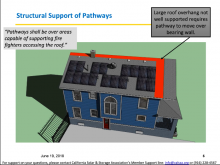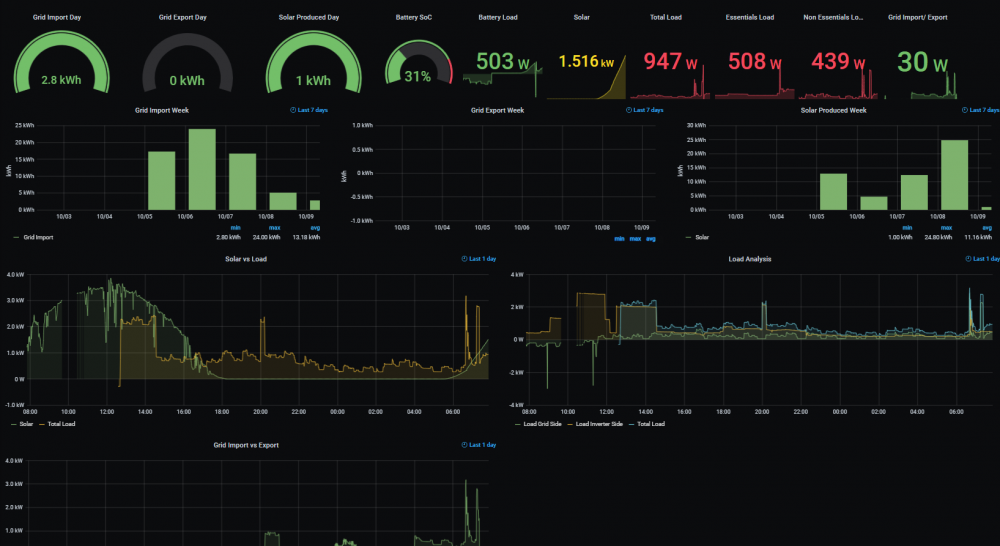Don't hold me to this & check with your county building dept & your installer.... If the county/AHJ is using the most recent codes, then from the street side there needs to be a 36" wide path from eave to ridge on a portion of the roof. If a street-side, adjacent roof face can be accessed, then the 36" path is allowed to be on that face. And if your panel square footage is under 33% (or 30%?) of the total roof area, then you are allowed an 18" ridge setback on both sides of the ridge where the panels are located. It looks like you have well under 30% of your total roof covered in panels. Valleys & hips also fall under the 18" per side. If the adjacent roof face to the hip or valley doesn't have any panels, then you can mount them right to the edge of that feature.
Go to this HeatSpring training site & watch the
this link (See Sean White) "Solar Building Codes, Fire Codes, Electric Vehicles, Rapid Shutdown and Energy Storage Systems". There are 2 videos from a guy that helped write the national codes for fire & emergency personnel setbacks. There are a lot of examples they go through.
If the county isn't using the latest version of the codes, then it can either require 36" at the ridge or if they go by a really old code, no setbacks at all.
There are also wind requirements that dictate the rack support mount spacing depending on how close the panel are to the eave & ridge areas. If you get close to the edges (Zone 2) then the spacing needs to be reduced/narrowed to provide more strength. The worst areas are near the eave corners & ridge/eave ends (Zone 3). The zone distance ('a") is usually 10% of the narrowest part of a building's side. If you have a 45' x 75' building foot print, then a = 0.1 x 45'(540") = 54" => so panels within 54" of roof edges need to have the rack mounts spaced per the manufacturer's tables on snow & wind loading. I think in your area, which is nearly the same latitude as mine, a 140 mph wind zone is used for these calculations.
Anyway, your installer should have all these details since it needs to be part of the permit paperwork. I would ask him for a copy.
Wind Zones...










